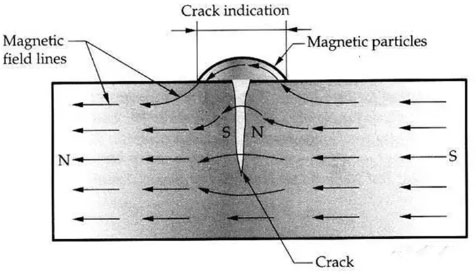MPI (Magnetic Particle Inspection) Test
Magnetic Particle Inspection (MPI), also known as Magnetic Particle Testing (MT), is a recognized non-destructive testing method used to detect surface and near-surface defects in ferromagnetic materials. As an accredited third-party testing organization, OMSPL Lab provides MPI services in accordance with ISO, ASTM, and industry standards.
Magnetic particle testing methods:
- Wet Method:This method uses magnetic powder suspended in oil, water, or another liquid medium to detect defects. The magnetic powder is attracted to the leakage magnetic field, revealing the shape and size of the defect. The smaller particle size of the magnetic powder in this method enhances detection sensitivity due to its dispersion and suspension properties.
- Dry Method:Also known as the dry powder technique, this method involves applying a specific dry magnetic powder directly to a magnetized workpiece. Defects in the workpiece create magnetic traces. The dry method is typically used with portable equipment for localized inspection of large castings, forgings, structures, and weldments, particularly when the wet method is not suitable.

Magnetic Particle Inspection Process:
- Preparation: Verify the sensitivity of the testing equipment and clean the parts’ surfaces of oil, rust, and other contaminants.
- Magnetization: Apply a magnetic field to the part to be tested.
- Application: Apply magnetic suspension or powder to the surface.
- Observation: Analyze and observe the magnetic markings to detect any flaws.
- Demagnetization: Remove the magnetic field from the part.
- Post-Inspection: Clean, dry, and apply anti-rust treatment to the part.
- Documentation: Record all relevant details, including the magnetic procedure, specimen condition, magnetic current, mode, interpretation of markings, test date, operator and assessor details, and final results.

